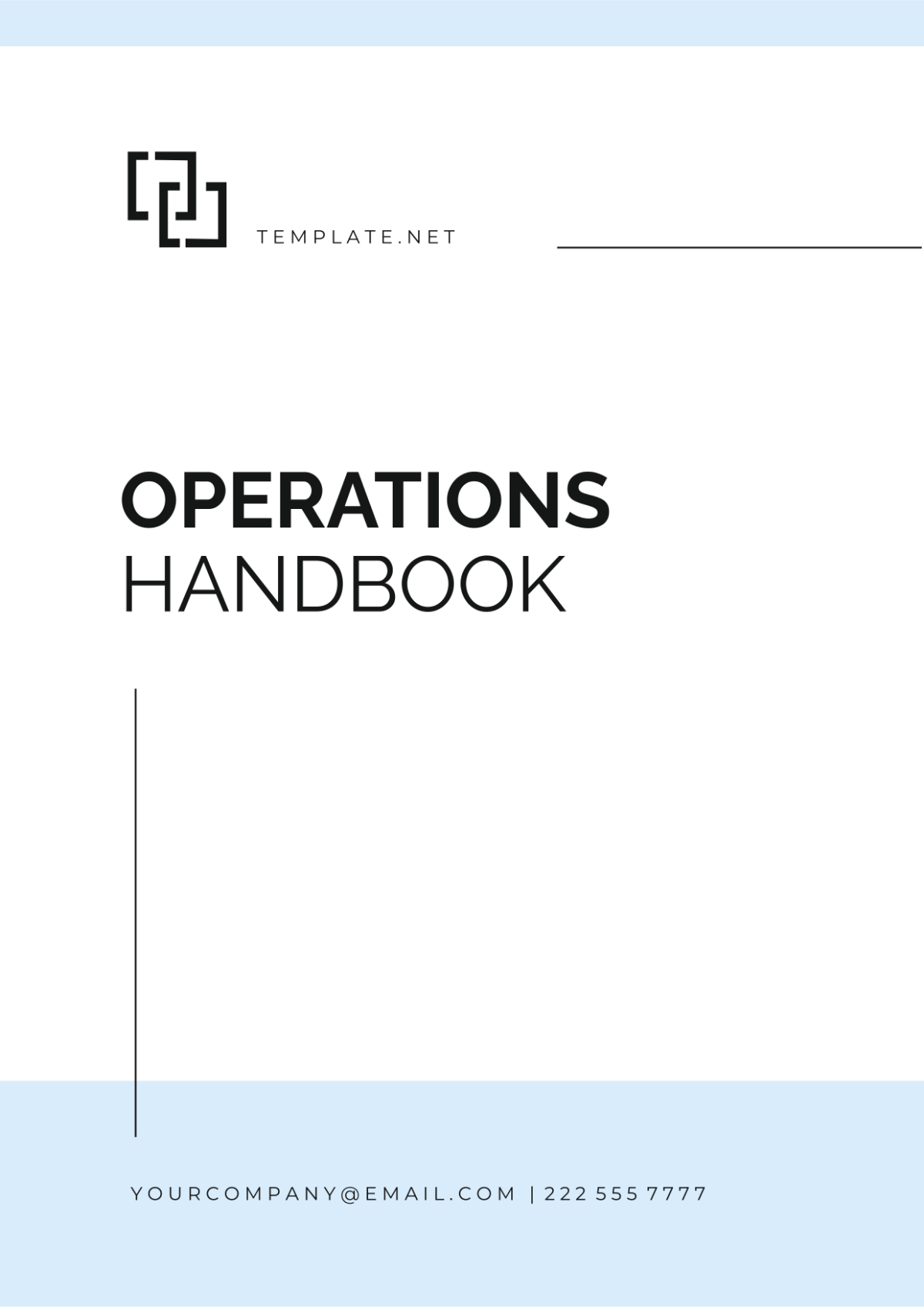Sales Handbook for Post-Closure Client Management
1. Defining Post-Closure Client Management
A. Overview
Post-closure client management, often referred to as post-sale or after-sales management, is the strategic approach that companies employ to cultivate and sustain meaningful client relationships once a sale has been successfully concluded. This phase is absolutely critical in the customer lifecycle, as it plays a pivotal role in bolstering customer satisfaction and fostering long-term client loyalty. Post-closure client management encompasses a range of activities and interactions aimed at ensuring that clients stay engaged with your brand and consistently receive value from the products or services they have invested in.
B. Key Elements
Sustained Engagement: Post-closure client management involves staying in regular contact with clients through various means, such as follow-up emails, phone calls, or surveys, to maintain a strong connection and foster a sense of partnership.
Value Delivery: The process focuses on providing ongoing value through resources, support, or enhancements to the initial purchase, ensuring clients continually benefit from their investment.
Problem Resolution: Effectively addressing client concerns, issues, or complaints in a timely and satisfactory manner is an integral part of post-closure management, as it directly impacts overall client satisfaction.
C. Enduring Benefits
Customer Retention: By emphasizing post-closure client management, businesses are more likely to retain their customer base and reduce churn, leading to increased revenue and growth.
Brand Advocacy: Delighted clients who experience exceptional post-sale service are more likely to become brand advocates, spreading positive word-of-mouth and potentially bringing in new clients.
Feedback Loop: It establishes a valuable feedback loop, enabling companies to gather insights for product or service improvements and enhancements.
Long-Term Relationships: The ultimate goal is to foster and nurture long-term client relationships, ensuring a steady revenue stream and a solid client base for future endeavors.
2. Benefits and Importance
Why is post-closure client management important?
Enhances Customer Loyalty and Retention: Sustaining strong, long-term relationships with your clients is pivotal for fostering loyalty. Loyal customers not only return for additional purchases but also become advocates, referring your products or services to others.
Provides Opportunities for Upselling and Cross-Selling: Post-closure client management opens doors for increasing revenue by identifying additional needs or complementary services/products your clients might benefit from. This not only benefits your bottom line but also enriches the client's experience.
Gathers Valuable Feedback for Product/Service Improvement: Engaging with clients post-sale allows you to gain insights into their experiences and any concerns they may have. Constructive feedback enables you to refine and optimize your offerings, making them more tailored to your clients' evolving needs.
Builds a Positive Reputation Through Satisfied Clients: Satisfied clients are more likely to speak favorably about your business, enhancing your reputation through word-of-mouth marketing. A strong reputation attracts new clients and contributes to overall brand credibility.
Strengthens Long-Term Business Relationships: Maintaining relationships after the sale showcases your commitment to client success. This not only solidifies current relationships but also fosters trust and confidence in your brand, paving the way for fruitful collaborations in the future.
Enhances Data-Driven Decision-Making: Regular interaction with clients post-sale provides you with valuable data and insights that can guide your business strategies. By understanding your clients' behavior and preferences, you can tailor your marketing and product development efforts more effectively.
Reduces Customer Acquisition Costs: It is often more cost-effective to retain existing clients than to acquire new ones. Effective post-closure management ensures that you make the most of your current client base, reducing the need for extensive and expensive marketing campaigns to replace lost clients.
3. Client Segmentation and Analysis
One of the cornerstones of successful post-closure client management is the art of segmentation. By categorizing your clients into distinct groups based on various factors, you empower your sales team to deliver tailored post-sale engagement strategies that cater to each client's unique needs and preferences. Here are the key factors for client segmentation:
Purchase History: Analyzing a client's purchase history allows you to understand their buying patterns, preferred products or services, and frequency of purchases. This insight can guide your approach when suggesting complementary products or services or offering loyalty rewards.
Demographics: Demographic information, such as age, gender, income, and family size, helps you grasp the characteristics of your clients. This data is crucial for crafting marketing messages and engagement strategies that resonate with specific audience segments.
Industry: If your clients represent different industries, understanding the nuances of each can make a substantial difference. Industry-specific knowledge enables you to provide tailored solutions and position your products or services as industry-specific solutions.
Geographical Location: A client's location can influence their needs and preferences. Local clients may require on-site support, while those farther away may benefit from remote assistance. Understanding geographical differences can guide your service delivery.
Needs and Preferences: The most critical element of client segmentation is the identification of their unique needs and preferences. This includes their pain points, goals, communication preferences, and any special requirements. By delving into these details, you can provide personalized experiences and build stronger relationships.
Segmenting clients is not a one-time effort but an ongoing process. It ensures that your post-closure client management strategies evolve alongside your clients' changing needs. Effective segmentation not only fosters stronger client relationships but also drives growth and enhances your ability to adapt to the dynamic marketplace.
4. Building Post-Sale Relationships
In the world of sales, the culmination of a successful transaction marks not an endpoint, but a new beginning - the beginning of the post-sale relationship. It's during this phase that we have the opportunity to transform a one-time buyer into a loyal, lifelong advocate for your brand. This page delves into the essential strategies and practices for nurturing these client relationships.
A. Regular Follow-Up and Check-Ins
Communication is the cornerstone of post-sale relationship building. Regular follow-up and check-ins are indispensable for staying connected with clients. These interactions serve various purposes, such as:
Ensuring client satisfaction with their purchase.
Addressing any questions, concerns, or issues promptly.
Gathering feedback on their experiences.
Reinforcing your commitment to their success.
Effective follow-up is not only about solving problems but also about showing that you genuinely care about their well-being. Whether it's a quick email, a personalized phone call, or an automated survey, each touchpoint matters.
B. Providing Additional Resources or Content
Your role as a post-sale manager is to add ongoing value to the client's journey. This can be achieved by consistently providing them with resources and content that aid their understanding and utilization of your products or services. Consider these content types:
How-to guides and tutorials.
Industry insights and best practices.
Customer success stories and case studies.
Tips and tricks for maximizing their investment.
Exclusive access to product updates or beta features.
Not only does this content demonstrate your commitment to their success, but it also keeps them engaged and informed, solidifying their trust in your brand.
C. Personalizing Interactions
One-size-fits-all approaches no longer suffice in today's customer-centric environment. Personalization is key to building strong post-sale relationships. Take time to understand your clients' unique needs, preferences, and pain points. This allows you to tailor your interactions in the following ways:
Address clients by name and reference their specific needs.
Offer customized solutions and recommendations.
Send personalized messages on special occasions or milestones.
Adapt your communication style to match their preferences (email, phone, in-person).
D. Offering Exclusive Client Events or Webinars
One of the most effective ways to keep clients engaged and connected is by offering exclusive client events or webinars. These events serve as a platform for:
Sharing industry insights and trends.
Demonstrating new product features.
Providing opportunities for networking and collaboration.
Building a sense of community among your clients.
Offering a forum for clients to share their experiences and feedback.
E. Acknowledging Milestones and Anniversaries
Celebrate your clients' journey with your brand by acknowledging their milestones and anniversaries. This could include:
Recognizing the anniversary of their first purchase.
Commemorating significant achievements, like reaching a usage milestone.
Sending a personalized thank-you note or gift on special occasions.
Providing exclusive offers or discounts to mark these moments.
5. Handling Post-Sale Concerns and Feedback
Effective post-closure management involves addressing concerns and feedback promptly. Strategies to include:
Establishing clear channels for client feedback: Create accessible and well-defined pathways for clients to express their opinions, questions, and concerns, ensuring that their feedback is easily collected and heard.
Quick resolution of issues: Swiftly address and resolve client problems and concerns to prevent frustration and maintain satisfaction, demonstrating a commitment to delivering exceptional customer service.
Acknowledging and acting on suggestions: Demonstrate a proactive approach by not only acknowledging client recommendations but also implementing actionable suggestions, showing clients that their input is valued and acted upon.
Implementing a client-friendly complaint resolution process: Develop a structured and user-friendly process for addressing complaints, making it easy for clients to voice dissatisfaction and ensuring that their issues are addressed promptly and efficiently.
6. Upselling and Cross-Selling Strategies
Explore techniques for increasing revenue and client value through upselling and cross-selling:
Analyzing client needs for additional services or products
Creating compelling offers
Timing offers effectively
Monitoring the success of upselling and cross-selling efforts
7. Measuring Success with KPIs
To gauge the effectiveness of your post-closure client management efforts, it's imperative to track and analyze key performance indicators (KPIs). These KPIs provide valuable insights into the health of your client relationships and the impact of your post-sale strategies. The following KPIs should be considered:
Customer Satisfaction Scores (CSAT):
CSAT measures how satisfied clients are with your product or service. High CSAT scores are indicative of content, loyal customers, while low scores may signal dissatisfaction and the need for improvement.
Customer Retention Rates:
Retention rates reflect the percentage of clients who continue doing business with you after the initial sale. A high retention rate is a sign of strong post-closure management, as it demonstrates that clients see ongoing value in your offerings.
Upsell and Cross-sell Conversion Rates:
These conversion rates track how successful you are at persuading existing clients to purchase additional products or services. Improving these rates can significantly impact your revenue and client lifetime value.
Net Promoter Score (NPS):
NPS is a measure of client loyalty and their likelihood to recommend your business to others. It provides a clear picture of how well you are meeting your clients' expectations and fostering positive word-of-mouth marketing.
Client Lifetime Value (CLV):
CLV is a comprehensive metric that evaluates the total revenue generated from a client throughout their entire relationship with your company. A rising CLV is a strong indicator of effective post-closure management and client satisfaction.
By regularly monitoring and analyzing these KPIs, you can gain actionable insights into the impact of your post-closure client management strategies and make data-driven decisions to enhance client satisfaction and long-term success.
8. Conclusion
Post-closure client management is no less important than the selling process itself. At [Your Company Name], we are committed to maintaining strong relationships with our clients. We believe in delivering and continuously adding value, which contributes to long-term mutual success and growth.
This Sales Handbook for Post-Closure Client Management guides you through the essential strategies and metrics for successful long-term client management post-sale. Remember to keep a customer-centric outlook, focused on satisfying your clients’ needs and exceeding their expectations. With dedication, you can cultivate profitable, sustained relationships that bring significant success to [Your Company Name].

















































